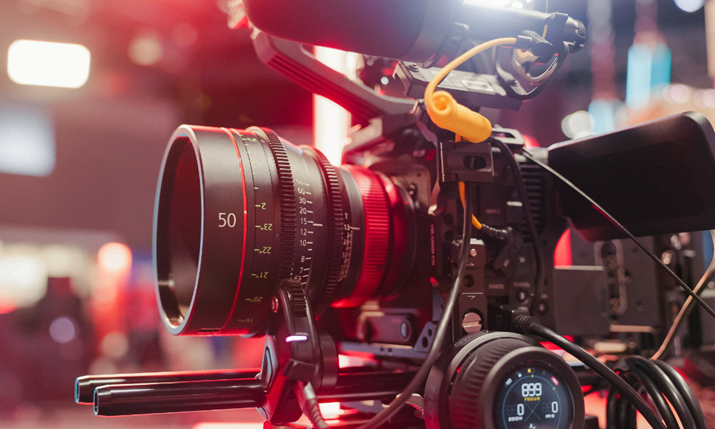Doing more with less: CVP highlights the technologies helping to improve efficiencies and engage viewers
 By Alun Milton, CVP, senior account manager.
By Alun Milton, CVP, senior account manager.
While 2024 is undoubtedly going to be a watershed year for the sports broadcasting industry, with many extremely high profile and critical events happening, despite being one of the traditionally more fallow odd years, 2023 definitely showcased its fair share of innovation. Not all of this was genuinely new, of course; some of it was more an optimisation of processes and technology already adopted in the industry. But progress in fields such as sustainability and the accelerating rollout of 5G networks was welcome nevertheless.
Perhaps the biggest impact for viewers came with the increased adoption of cinematic looks into some of the largest sporting productions. The shallow depth of field that we associate with cinema has become increasingly widespread in high-profile concert footage and has made a steady transition from canned to live events. Sport was the inevitable next frontier, and we are seeing more manufacturers release models that allow for the integration of cinematic camera technology and lenses into established broadcast set-ups. They are not used everywhere by any means, as pulling focus with this sort of equipment at a live sporting event is a definite challenge even for skilled operators, but for player close-ups and reaction shots they really do have an impact.
5G expansion
Perhaps one of the technologies that will have the biggest impact as 2024 unfolds though will be 5G. The expansion of 5G networks is destined to bring with it faster connectivity, lower network latency and new methods of working through network slicing that will enable production teams to dream up progressively less tethered setups at events. Adoption has been slower than many figured it would be thanks to the pandemic, but 2024 will potentially be a significant tipping point for the technology in the production space.
No such reticence in adoption with AI. It’s hard to credit that generative AI in the public domain is only just over a year old, so ubiquitous and so disruptive has it become. We expect to see it used a lot more as a production assist, controlling remote cameras in lower-tier sports for streaming, for example, with increasing surety and robustness, as well as powering a burgeoning amount of onscreen data analysis in graphic overlays.
Its expansion will be closely tied to an increase in cloud workflows, which is in turn closely tied to the accelerating move to IP. IP-based workflows are increasingly a fundamental aspect of remote and distributed production, as companies in the sports and live sector realise that the many advantages it confers, from cost efficiencies to increased sustainability, are now met with the robustness that lives work needs. Coupling that with an associated move into end-to-end cloud workflows throughout the industry and the impressive modularity, scalability and geographic flexibility that cloud workflows confer make their mainstream adoption more of a matter of when and not if nowadays.
Elsewhere, we expect to see a continued rise in virtual production. The technology is evolving in several different directions: at the high-end we are seeing the first emergence of quality in-camera VFX, while an overall improvement in equipment capabilities and off-the-shelf modular solutions is seeing LED volumes start to open up to customers on tighter budgets than could previously be accommodated.
Protecting content
One interesting aspect that productions will start to need to pay closer attention to is content security. Technologies such as digital watermarking are mandated by rightsholders when it comes to distribution deals nowadays, and more attention is starting to be paid to their use in the production side of things too. We are not in the tethered SDI era anymore, and as our visual data moves through an increasingly intricate web of 5G and cloud connections, making sure its security remains intact is becoming a pressing concern.
There will be more content to protect too. One aspect that is obvious from talking to our customers is that sports productions are expanding across both the platforms and the schedules. More content is required to amp up fan engagement, whether that is material to run out via social channels or pre-game build-up and post-game analysis. A 90-minute match is now typically a four-hour broadcast and, with sporting brands looking to extend their influence away from game days or race days following the success of programmes such as Netflix’s Drive to Survive, that demand for more at all levels is likely to continue.
The question the industry faces is how to accommodate that and remain sustainable. Sustainability and published goals of reaching net zero are becoming more and more important to rightsholders and broadcasters — and the public who support them in turn. One of the key trends of 2024 will be how the industry meets that challenge and adopts working practices that champion sustainable methodologies at all points in the production chain. We’ve made much progress; we need to make more.

